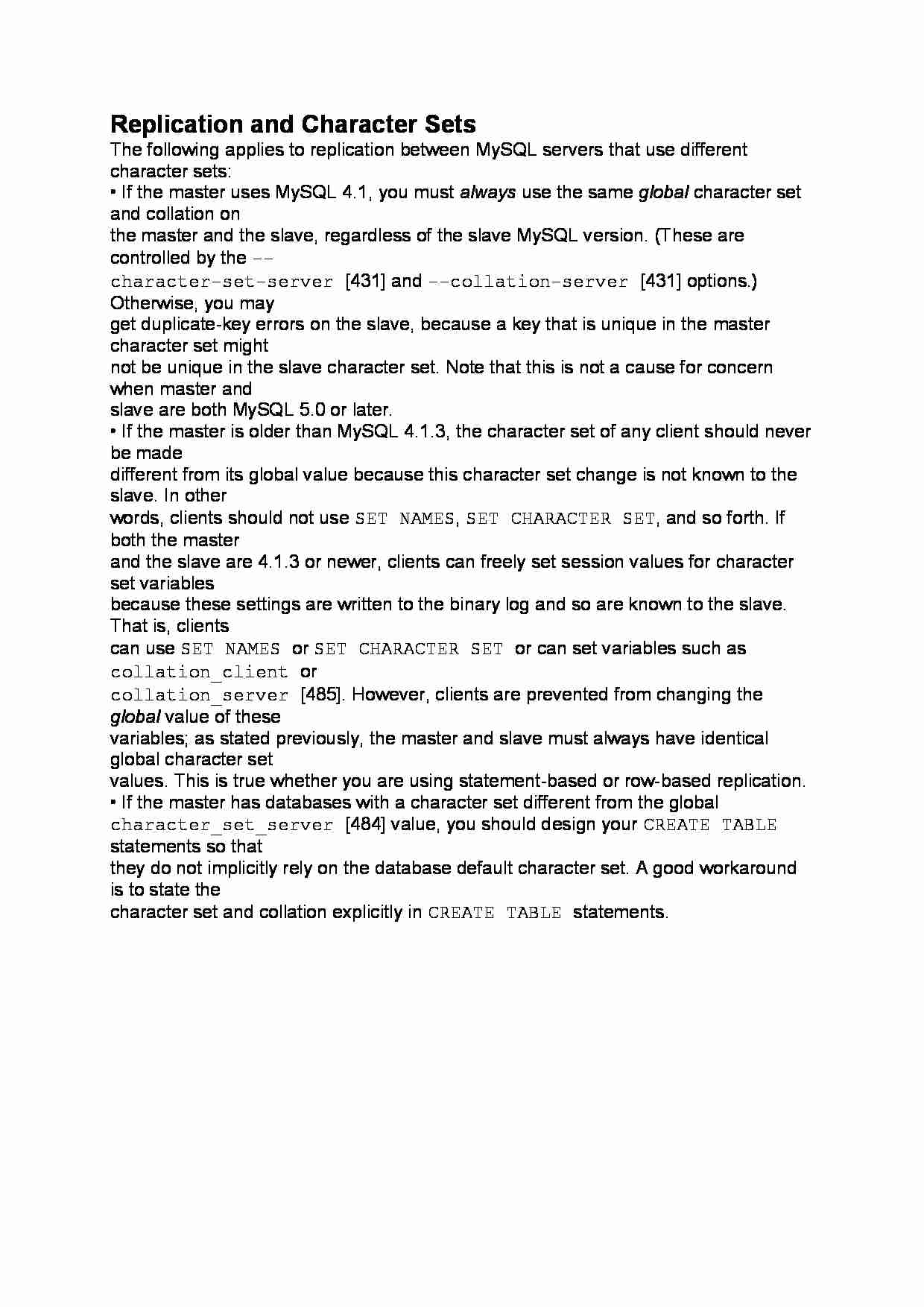
Replication and Character Sets
The following applies to replication between MySQL servers that use different character sets:
• If the master uses MySQL 4.1, you must always use the same global character set and collation on
the master and the slave, regardless of the slave MySQL version. (These are controlled by the --
character-set-server [431] and --collation-server [431] options.) Otherwise, you may
get duplicate-key errors on the slave, because a key that is unique in the master character set might
not be unique in the slave character set. Note that this is not a cause for concern when master and
slave are both MySQL 5.0 or later.
• If the master is older than MySQL 4.1.3, the character set of any client should never be made
different from its global value because this character set change is not known to the slave. In other
words, clients should not use SET NAMES, SET CHARACTER SET, and so forth. If both the master
and the slave are 4.1.3 or newer, clients can freely set session values for character set variables
because these settings are written to the binary log and so are known to the slave. That is, clients
can use SET NAMES or SET CHARACTER SET or can set variables such as collation_client or
collation_server [485]. However, clients are prevented from changing the global value of these
variables; as stated previously, the master and slave must always have identical global character set
values. This is true whether you are using statement-based or row-based replication.
• If the master has databases with a character set different from the global
character_set_server [484] value, you should design your CREATE TABLE statements so that
they do not implicitly rely on the database default character set. A good workaround is to state the
character set and collation explicitly in CREATE TABLE statements.
... zobacz całą notatkę



Komentarze użytkowników (0)